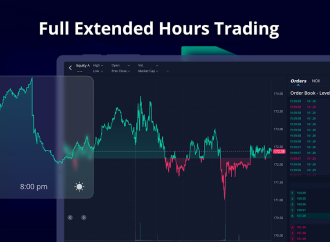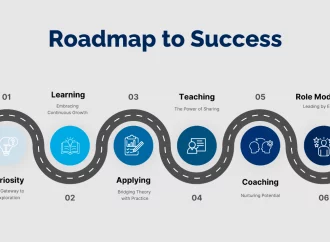Welcome to a world where everything is connected, where information flows freely and knowledge is at your fingertips. The internet has revolutionized the way we live, work and communicate with one another. From social media to online shopping and virtual reality, it’s hard to imagine life without the internet. But how much do you really
Welcome to a world where everything is connected, where information flows freely and knowledge is at your fingertips. The internet has revolutionized the way we live, work and communicate with one another. From social media to online shopping and virtual reality, it’s hard to imagine life without the internet. But how much do you really know about this global network? In this blog post, we’ve compiled 15 fascinating facts about the internet that will blow your mind! So sit back, relax, and get ready for an eye-opening journey through cyberspace!
How the internet was created
In the early days of computing, scientists and mathematicians used large mainframe computers to perform complex calculations. They also used punch cards to input data and program instructions. Then, in 1961, a man named Leonard Kleinrock wrote a paper on “packet switching” which laid the foundation for the modern internet. Packet switching is a way of sending data in small pieces, or packets, through a network of computers.
Kleinrock’s work was based on earlier ideas about networking by Paul Baran and Donald Davies. In 1965, Kleinrock published his paper “On Distributed Communications Networks” which described how packet switching could be used to build a nationwide network. This work was continued by others including Lawrence Roberts who designed the first network using packet switching called the ARPANET. The ARPANET was created in 1969 and consisted of four nodes, or computer networks, at universities in California and Utah.
The ARPANET was initially used for research purposes but it soon became clear that it had potential as a communications tool. In 1972, Ray Tomlinson sent the first email message using the @ symbol to indicate that it was going to another user on the same network. This simple idea revolutionized communication and led to the development of more sophisticated email applications that we use today.
In 1974, Bob Kahn and Vint Cerf developed the TCP/IP protocol which is still used today to route traffic across the internet.
The first website ever created
In August of 1991, the first website ever created went live. The site was created by Tim Berners-Lee while he was working at CERN. The site was a basic page of information about the World Wide Web project and how people could get involved. It is amazing to think about how far the internet has come in such a short amount of time.
Who owns the internet?
The internet is a global network of computers that connects billions of people around the world. It is not owned by any one person or organization, but it is maintained by a community of developers and engineers who work to keep it running.
How much data is transmitted over the internet every day?
Data is transmitted over the internet every day at an astonishing rate. In fact, it’s estimated that over 2.5 quintillion bytes of data are transmitted every single day. That’s a lot of data!
To put that into perspective, if you were to take all of the data transmitted over the internet in just one day and try to store it on your computer, you would need an enormous amount of storage space. In fact, you would need about 4,000 terabytes of storage space!
Interestingly, a large majority of the data that is transmitted over the internet each day is video content. It’s estimated that around 70% of all internet traffic is video content. This shouldn’t come as too much of a surprise given the popularity of video streaming services like YouTube and Netflix.
What is the Deep Web?
The Deep Web is a vast and largely untapped resource that contains a wealth of information. It is estimated to be 500 times larger than the surface web, which is the part of the internet that is indexed by search engines. The Deep Web is made up of unindexed websites, which means that they cannot be found by using a search engine. In order to access the Deep Web, you need to use a special browser or tool that allows you to view unindexed websites.
There are many reasons why someone might want to access the Deep Web. Researchers often use it to find reliable sources of information that are not available on the surface web. Journalists may use it to find primary sources for stories or to communicate with sources who wish to remain anonymous. And everyday users may simply be curious about what lies beyond the reach of search engines.
Despite its negative reputation, the Deep Web is not all dark and sinister. Yes, there are some areas of the Deep Web that are used for illegal activities, but there are also many legitimate uses for it as well. TheDeepWebSites.com is a good starting point for those who want to explore the Deep Web safely and responsibly.
What is an IP address?
An IP address is a numerical label assigned to each device connected to a computer network that uses the Internet Protocol for communication. An IP address serves two principal functions: host or network interface identification and location addressing.
IP addresses are written and displayed in human-readable notations, such as 172.16.254.1 in IPv4, and 2001:db8:0:1234:0:567:8:1 in IPv6. They are usually represented as a 32-bit number in decimal notation for IPv4 and a 128-bit number in hexadecimal notation for IPv6, divided into four octets (octets are also known as bytes).
How many devices are connected to the internet?
As of June 30, 2017, there are an estimated 3.74 billion internet users around the world. Out of those users, 2.91 billion are active social media users. And out of the 7.6 billion people in the world, approximately 60% are internet users.
These numbers have been growing steadily over the years and it is expected that by 2020, there will be nearly 4.57 billion internet users around the globe. With the rise of mobile devices and increased access to high-speed internet, we can only expect these numbers to continue to grow.
What is 5G?
5G is the fifth generation of wireless technology. It promises speeds up to 100 times faster than 4G, with latency low enough to enable new applications like virtual reality, autonomous vehicles and the Internet of Things. 5G will also be more energy-efficient and use a higher frequency of the electromagnetic spectrum than previous generations.
What is net neutrality?
Net neutrality is the principle that internet service providers (ISPs) must treat all data on the internet equally, and not discriminate or charge differently based on content, user, device, or any other characteristic.
In 2015, the Federal Communications Commission (FCC) adopted strong net neutrality rules to keep the internet open and free. But in 2017, the new FCC chairman Ajit Pai proposed a plan to gut these rules. Pai’s proposal was approved by a 3-2 vote by the FCC in December 2017.
The fight for net neutrality is far from over. In early 2018, Congress introduced legislation that would overturn the FCC’s decision and restore strong net neutrality protections. And a number of state governments are taking action to protect net neutrality within their states.
What are cookies?
Cookies are small text files that are placed on your computer by websites that you visit. They are widely used in order to make websites work, or work more efficiently, as well as to provide information to the owners of the site.
There are two types of cookies: first-party cookies and third-party cookies. First-party cookies are created by the website you visit. Third-party cookies are created by other sites – for example, if you see a ‘like’ button on a website, this will create a third-party cookie.
Most web browsers allow you to control whether you accept cookies or not. You can usually find these settings in the ‘options’ or ‘preferences’ menu of your browser. If you do not accept cookies, you may find that some parts of websites do not work properly for you.
What is an ISP?
An Internet Service Provider (ISP) is a company that provides customers with access to the Internet. An ISP can be an independent company, such as Verizon or Comcast, or it can be a part of a larger company, such as AOL or MSN.
ISPs use a variety of technologies to provide customers with access to the Internet, including dial-up, DSL, cable, and fiber optic. Dial-up is the oldest and slowest technology, while fiber optic is the newest and fastest.
Most ISPs offer both home and business service plans. Home service plans typically include email accounts and web space for hosting a personal website. Business service plans usually include additional features such as dedicated customer support and higher bandwidth allowances.
What
The Internet is a global system of interconnected computer networks that use the standard Internet protocol suite (TCP/IP) to serve billions of users worldwide. It is a network of networks that consists of private, public, academic, business, and government networks of local to global scope, linked by a broad array of electronic, wireless, and optical networking technologies. The Internet carries an extensive range of information resources and services, such as the inter-linked hypertext documents and applications of the World Wide Web (WWW), electronic mail, telephony, and file sharing.





















Leave a Comment
Your email address will not be published. Required fields are marked with *